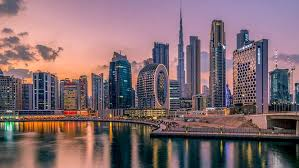Now Reading: 5 Strong Trends from Northern Emirates Rental Growth
-
01
5 Strong Trends from Northern Emirates Rental Growth
5 Strong Trends from Northern Emirates Rental Growth

Table of Contents
The UAE real estate market continues to evolve in 2025, but it’s not just Dubai or Abu Dhabi leading the way. The Northern Emirates—Sharjah, Ajman, Ras Al Khaimah, Fujairah, and Umm Al Quwain—are gaining momentum, especially in the rental housing sector. Driven by affordability, urban infrastructure, and cross-emirate migration, rental demand has surged in these emerging markets.
This article explores five powerful trends shaping rental growth in the Northern Emirates, with insights into what investors, landlords, and tenants should expect this year and beyond.
1. Sharjah and Ajman See Record Demand for Budget Rentals
Among all Northern Emirates, Sharjah and Ajman continue to lead in affordable rental housing. In 2024 and early 2025, the demand for 1- and 2-bedroom apartments under AED 30,000/year has grown significantly, driven by:
- Cost-conscious tenants relocating from Dubai
- Growing expatriate workforce
- Improved public transport links to major business hubs
According to market reports, Ajman rents rose by 8–12% in the past year, particularly in areas like Al Nuaimiya, Al Rashidiya, and Al Jurf. Sharjah followed closely, with prime locations like Al Majaz and Al Nahda reporting 6–10% annual rent increases.
Investor Tip: Ajman’s low property acquisition cost coupled with rising rental yields makes it a high-potential buy-to-let market.
2. Ras Al Khaimah’s Coastal Communities Attract Long-Term Tenants

Ras Al Khaimah (RAK), known for its scenic beaches and relaxed lifestyle, is experiencing a rental boom in master-planned communities such as:
- Al Hamra Village
- Mina Al Arab
- Julphar Towers
These areas are attracting remote workers, retirees, and digital nomads, thanks to:
- Affordable seaside living compared to Dubai
- Availability of freehold properties
- Long-stay visa incentives (Golden Visa, Freelancer Visa)
As a result, rents for waterfront apartments and villas have surged by 10–15%, with higher occupancy rates than in previous years.
3. Infrastructure Expansion Fuels Rental Growth in Fujairah and UAQ
Fujairah and Umm Al Quwain (UAQ), traditionally considered quieter emirates, are now part of the UAE’s federal investment strategy. Recent infrastructure upgrades include:
- The Etihad Rail expansion reaching Northern Emirates
- Federal road enhancements connecting Fujairah to Dubai in under 90 minutes
- New industrial and logistics zones fueling job creation
These improvements are attracting blue-collar workers, logistics professionals, and budget-conscious families, increasing rental demand in key neighborhoods. Studio apartments in UAQ now rent at AED 16,000–20,000/year, up from AED 12,000–15,000 just two years ago.
4. Sharjah’s Regulatory Reforms Stabilize Rental Markets

In a bid to enhance transparency and tenant confidence, Sharjah has implemented regulatory changes impacting rental contracts and tenant rights. Highlights include:
- Automatic renewal clauses to protect long-term tenants
- Rental dispute committees to resolve landlord conflicts
- Stricter registration for subletting and short-term leases
These policies have stabilized the rental market and reduced volatility. In turn, landlords benefit from better tenant retention and lower vacancy rates, while tenants enjoy clearer lease terms.
5. Rising Demand for Villas and Larger Units Across Northern Emirates
One clear post-pandemic trend is the growing preference for spacious homes, especially villas and townhouses. Northern Emirates have capitalized on this by offering:
- Larger living spaces for 30–40% less than Dubai prices
- Family-oriented communities with parks, schools, and beaches
- Flexible rental payment terms (e.g., 4–6 cheques, monthly options)
This has resulted in strong year-over-year rent growth for villas in places like:
- Ajman’s Al Mowaihat and Al Rawda
- Sharjah’s Al Suyoh and Al Tai
- RAK’s Al Dhait and Khuzam
With urban families relocating in search of better space and lifestyle, villas in these areas are experiencing 12–18% rent appreciation annually.
Conclusion
The Northern Emirates are no longer just satellite markets to Dubai—they’re now self-sustaining rental hubs offering real value to tenants and investors alike. With growing infrastructure, strong tenant demand, and government-backed development, rental growth across Sharjah, Ajman, RAK, Fujairah, and UAQ is likely to remain robust through 2025. watch here
If you’re an investor seeking high yields with lower entry costs, or a renter looking for a better quality of life without the Dubai price tag, the UAE real estate landscape north of Dubai offers a compelling case.
read more: UAE Real Estate: 7 Strategic Tax Benefits for Multisite Property Owners





















